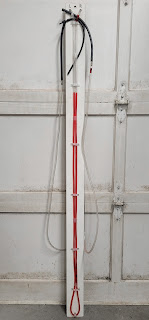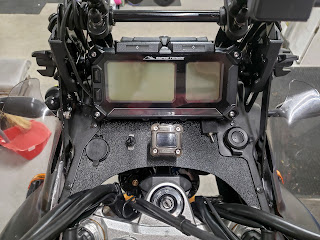Fuel Octane Rating - Canadian/British Columbian Fuels & Percentage of Ethanol Explained - List of Ethanol Free Fuel Gas Stations in Canada & USA
Fuel Octane Rating
- Research Octane Number (RON): The most common type of octane rating worldwide is the Research Octane Number (RON). RON is determined by running the fuel in a test engine with a variable compression ratio under controlled conditions, and comparing the results with those for mixtures of iso-octane and n-heptane.
- Motor Octane Number (MON): Another type of octane rating, called Motor Octane Number (MON), is determined at 900 rpm engine speed instead of the 600 rpm for RON. MON testing uses a similar test engine to that used in RON testing, but with a preheated fuel mixture, higher engine speed, and variable ignition timing to further stress the fuel's knock resistance. Depending on the composition of the fuel, the MON of a modern pump gasoline will be about 8 to 12 octane lower than the RON, but there is no direct link between RON and MON. Pump gasoline specifications typically require both a minimum RON and a minimum MON.
- Anti-Knock Index (AKI) or (R+M)/2: In most countries in Europe (also in Australia and New Zealand) the "headline" octane rating shown on the pump is the RON, but in Canada, the United States, Brazil, and some other countries, the headline number is the average of the RON and the MON, called the Anti-Knock Index (AKI), and often written on pumps as (R+M)/2. It may also sometimes be called the Posted Octane Number (PON).
- Difference between RON, MON, and AKI: Because of the 8 to 12 octane number difference between RON and MON noted above, the AKI shown in Canada and the United States is 4 to 6 octane numbers lower than elsewhere in the world for the same fuel. This difference between RON and MON is known as the fuel's Sensitivity, and is not typically published for those countries that use the Anti-Knock Index labelling system.
- Observed Road Octane Number (RdON): Another type of octane rating, called Observed Road Octane Number (RdON), is derived from testing gasolines in real world multi-cylinder engines, normally at wide open throttle. It was developed in the 1920s and is still reliable today. The original testing was done in cars on the road but as technology developed the testing was moved to chassis dynamometers with environmental controls to improve consistency.
What Gas Should I put in my Motorcycle? The Skinny on Octane Rating (by Lemmy @ Revzilla)
Ethanol fuel is ethyl alcohol, the same type of alcohol found in alcoholic beverages, used as fuel. It is most often used as a motor fuel, mainly as a biofuel additive for gasoline. Ethanol fuel has a "gasoline gallon equivalency" (GGE) value of 1.5, i.e. to replace the energy of 1 volume of gasoline, 1.5 times the volume of ethanol is needed, resulting in lower fuel economy when operating your vehicle, but also has a higher octane number than gasoline, which provides increased power and performance. The benefits/detriments of ethanol vs non-ethanol fuel & separate additives/cleaners/stabilizers/octane boosters is a separate discussion...with non-ethanol being preferred by many.
Canadian Fuel Regulations Pertaining to Ethanol
Canadian General Standards Board document CAN/CGSB-3.511-2016 (Amended 2018) regulates Oxygenated Automotive Gasoline Containing Ethanol (E1-E10 and E11-E15) in Canada as follows:
Type B - E11-E15 11% to 15% ethanol
4.1.2 Grades: Grade 1 - Regular 87 antiknock index (RON + MON)/2 (minimum)
Grade 2 - Mid-grade 89
Grade 3 - Premium 91
Grade 4 - Super-premium 93
Grade 2 - Mid-grade 89
Grade 3 - Premium 91
Grade 4 - Super-premium 93
Additives: Oxygenated automotive gasolines containing ethanol may contain additives designed to improve the characteristics of the blend. Additives include but are not limited to metal deactivators, oxidation inhibitors, corrosion inhibitors, icing inhibitors and fuel system detergents. Additives designed and tested to enhance performance shall be added in amounts less than 1.0 % by volume, unless otherwise specified in this standard.
Canada is divided into 8 (A thru H) geographical zones of which BC is divided into 3 (See Map below) whereby Volatility Limits (vapour pressure, distillation & driveability index) are adjusted for fuel sold in each region & the time of year.
Canada also has regulations for Automotive Ethanol Fuel (E50-E85) CAN/CGSB-3.512-2013 if interested.
% of Ethanol Explained
I found this excerpt from an article discussing Shell V-Power 91 & Chevron 94 premium non-ethanol fuels interesting, that says that the regulations allow the % of ethanol to be averaged over all grades of fuel a retailer sells, so that higher octane fuels may contain less, or even no ethanol, than lower octane fuels (disclaimer: I have not verified this, but have seen this in separate sources):
- Shell V-Power Nitro+ 91, (V-Power 93 in the US), Chevron Supreme Plus 94 and most of the other brand "premium" gasolines do not have ethanol or small percentages. The Canadian regulation requires 10% ethanol average in its fuel, by volume sold. So your lowest tier (usually 87 octane) will have 10% to 15% ethanol in it. Most people buy this as it is the cheapest (often 10 to 12 cents/L less than the premium). The mid-range gas (89 octane) will have 5% to 7% ethanol. Let's say that by this point 95% of the people have bought gas with ethanol in it. This leave the other 5% able to buy ethanol free or low level ethanol gasoline and still have the retailer meet the regulatory requirements. It is also mandated that gasoline with ethanol be labeled as such. When you go to the pump, there will be a sticker beside it saying "may contain up to xx% ethanol. The ethanol free ones will also be labeled.
British Columbia updated it's fuel regulations in 2020 with the Renewable & Low Carbon Fuel Requirements Regulation that sets a minimum of 5% renewable content for fuel that may alter the numbers quoted in the article above that was sourced prior to 2020.
Living in the Lower Mainland I have used Shell V-Power Nitro+ Premium Unleaded 91 & Chevron Supreme Plus 94 Premium Unleaded non-ethanol fuels. Of the two, the Shell returned slightly better performance & mileage on my Super Tenere 1200 ES w/ECU dyno tuned/flash, Arrow header & Uni-Filters. The T7 is getting the Shell V-Power Nitro+ 91 non-ethanol as well, despite oem recommendation of unleaded 86 or higher octane rating. When neither of these non-ethanol fuels are available I run Premium unleaded 91 w/ethanol, which is what Yamaha has spec'd for the S10 & what it was tuned on for the dyno tune/flash. NOTE: unless a motor has been modified there will be negligible benefits by running a higher octane fuel than spec'd by the manufacturer...my Super Tenere 1200 ES mileage actually decreased with Chevron Supreme Plus 94 non-ethanol vs Chevron Premium Unleaded 91 w/ethanol....seems odd, but was documented on numerous occasions.
Shell V-Power Nitro+ Premium Unleaded (BC, Canada)
Shell makes numerous claims of clean running benefits (gunk, corrosion, wear) vs other brands...they very carefully stay away from performance claims. A few sport car forums, mostly promoting the benefits of non-ethanol vs ethanol in 91 vs 94 octane fuels, claim of more timing advance & higher dyno numbers with the Shell V-Power Nitro+ 91. As of Nov 2021 Shell also sells a 93 octane V-Power Nitro+ premium unleaded fuel.
According to research Shell V- Power Nitro+ premium unleaded 91 contains a lubricant called Friction Modification Technology (FMT) that reduces friction between the piston assembly and cylinder wall by coating them with a protective film. FMT was also used in the previous version of the V-Power fuel, but the content level in the new fuel has been boosted by 25%.
UPDATE: As of Oct 2023 all Shell gasolines include ethanol, including their 91 & 93 octane premium fuels...although the % is unknown.
NOTE: This info was first compiled in 2018 & updated Nov 2021 & Oct 2022...I am not promoting any particular fuel brand/grade over another, just reporting on my experience & research...your vehicle, preference, performance & mileage (pun intended) may vary 😀





Comments
Post a Comment